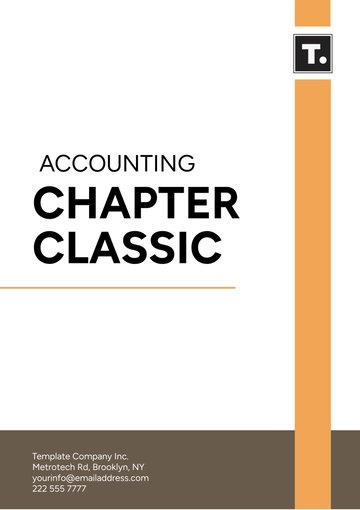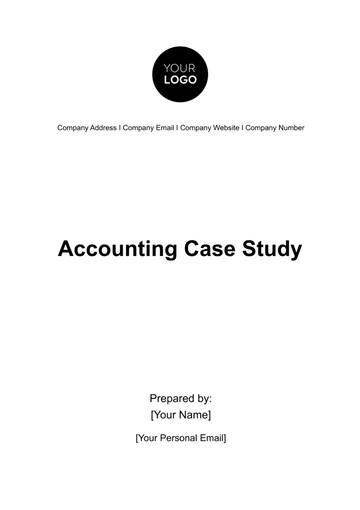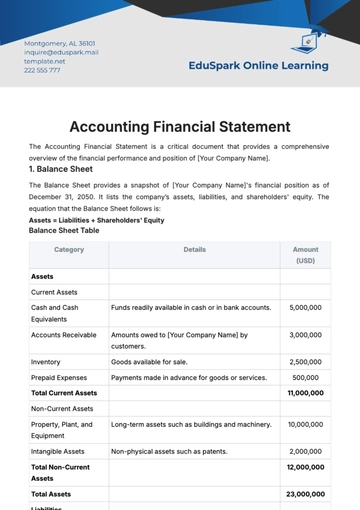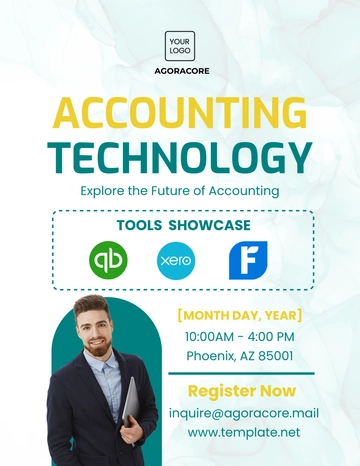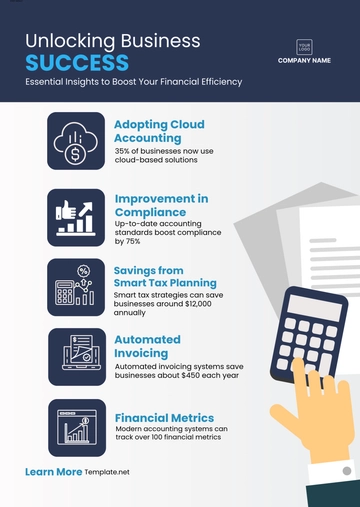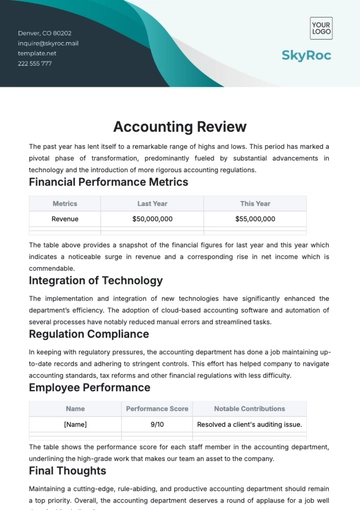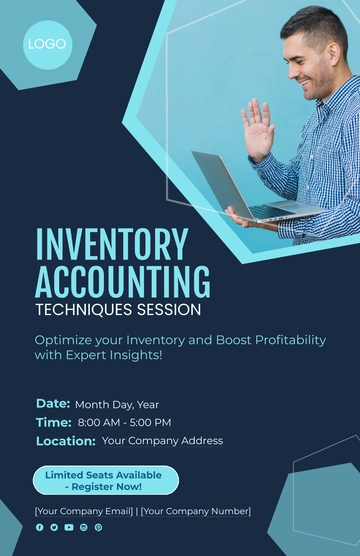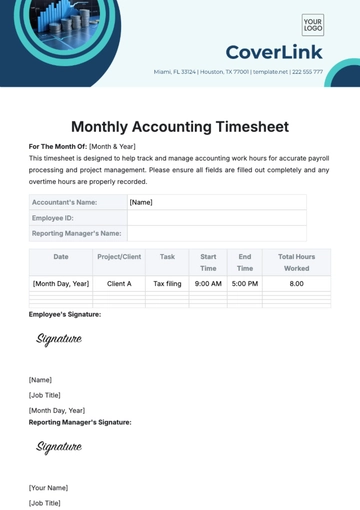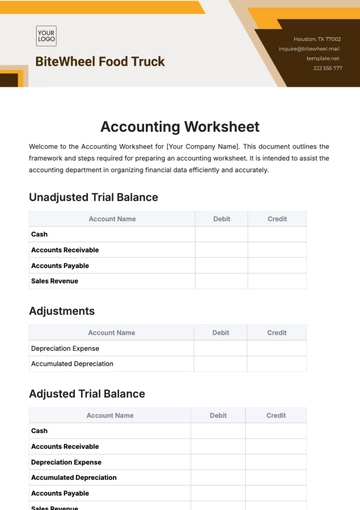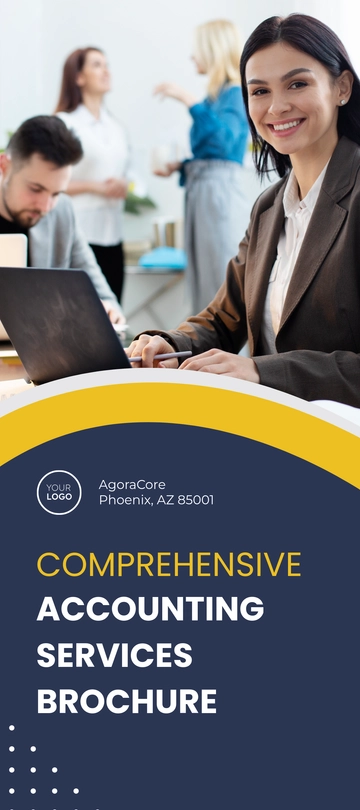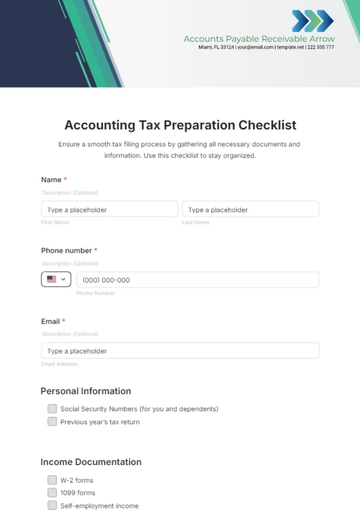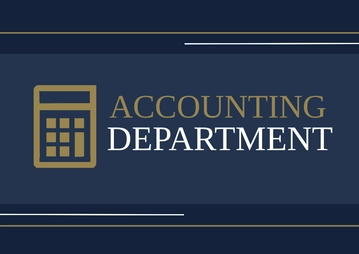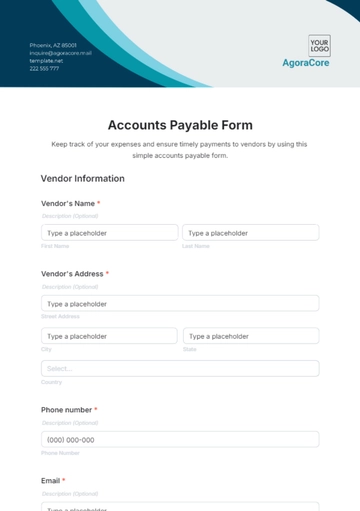Free Accounting Asset Management Software User Guide

Purpose of the Guide
This guide is designed to serve as a comprehensive manual for users of our Accounting Asset Management Software. Its purpose is to facilitate a deep understanding of the software's capabilities, guide users through its features, and assist in the effective management of assets throughout their lifecycle. Whether you are setting up the software for the first time, navigating through the advanced features, or looking to solve specific accounting challenges, this guide provides step-by-step instructions, best practices, and expert tips to maximize your use of the software.
Software Overview
Our Accounting Asset Management Software is a robust solution designed to streamline the process of managing a company's assets. From acquisition to disposal, our software offers a comprehensive set of tools for recording, tracking, and managing both tangible and intangible assets. Key features include asset registration and categorization, depreciation calculation, maintenance scheduling, and disposal management. Our software also supports detailed financial reporting and analytics, providing insights into asset valuation, depreciation trends, and maintenance costs, thereby enhancing decision-making and financial planning.
Target Audience
This software is tailored for a diverse range of users, including:
Accountants and Financial Managers: For accurate financial reporting, asset tracking, and depreciation management.
IT Managers: To oversee the implementation, integration, and administration of the software within an organization's IT infrastructure.
Operational Managers: For asset maintenance scheduling and cost management.
Audit and Compliance Officers: To ensure accurate asset valuation and adherence to financial regulations and standards.
Whether you are a seasoned professional in asset management or new to the field, our software is designed to meet your needs with an intuitive interface and comprehensive functionalities.
Software Version and Updates Information
This guide corresponds to version 1.0 of our Accounting Asset Management Software. We are committed to continuously improving our software to meet the evolving needs of our users. Updates and new features are regularly released to enhance functionality, security, and user experience. Users will be notified of available updates through the software's notification system. For the best performance and access to the latest features, we recommend keeping your software up to date.
Stay tuned to our official website and user dashboard for the latest information on updates, release notes, and new functionalities. Our support team is also available to assist with any questions or concerns regarding software updates and upgrades.
I. Getting Started
Embarking on the journey with our Accounting Asset Management Software begins with a few essential steps designed to ensure a smooth and efficient setup process. This section covers everything from verifying system requirements to configuring your initial setup, including company information, user accounts, and financial settings. By following these guidelines, you'll be well-prepared to take full advantage of the software's comprehensive asset management capabilities.
A. System Requirements
To ensure optimal performance and stability of our Accounting Asset Management Software, it's crucial that your system meets the following minimum requirements. These specifications support the software's advanced features and functionalities, providing a seamless user experience.
Requirement | Minimum Specification |
Operating System | Windows 10, macOS 10.15, or later |
Processor | Intel Core i3 or equivalent |
Memory | 4 GB RAM |
Hard Disk | 5 GB of free space |
Display | 1280 x 768 resolution |
Internet Connection | Required for installation, updates, and some features |
B. Installation Process
Installing our software is a straightforward process designed to get you up and running quickly:
Download the Installer: Obtain the latest version from our official website.
Run the Installer: Double-click the downloaded file to start the installation process.
Accept the License Agreement: Read and accept the terms to continue.
Choose the Installation Folder: Select a destination on your computer or accept the default location.
Install: Click the 'Install' button to begin the installation. This may take a few minutes.
Finish: Once installation is complete, click 'Finish' to exit the installer.
C. Initial Setup
After installation, launching the software for the first time initiates the initial setup wizard. This guided process helps you configure essential settings, ensuring the software is tailored to your organization's specific needs right from the start.
Setting up Company Information: The first step in the initial setup is entering your company information. This includes your company's name, address, tax identification number, and contact details. This information is crucial as it will appear on financial reports and asset tracking documents generated by the software.
User Creation and Permissions: Next, you'll create user accounts for individuals who will access the software. Assigning roles and permissions at this stage is critical for maintaining data integrity and security. Our software allows for the customization of user roles, ensuring that each team member has access to the necessary features and information according to their responsibilities.
Configuring Financial Settings: Finally, configuring your financial settings is a key part of the initial setup. This involves setting your fiscal year start and end dates, selecting the currency for financial transactions, and defining the default depreciation methods for assets. These settings can be adjusted later, but it's important to establish a solid foundation that aligns with your organization's financial practices.
II. Navigating the Interface
Upon successful setup, you'll be greeted by our user-friendly interface, designed to offer intuitive navigation and quick access to all the software's features. This section will guide you through the main components of the interface, including the dashboard, menu and navigation panels, and the various customization options available, ensuring you can efficiently manage your organization's assets.
A. Dashboard Overview
The Dashboard serves as the command center of our Accounting Asset Management Software, offering a comprehensive view of your asset management activities at a glance. It is designed to provide instant insights and easy access to key functionalities:
Asset Summary: Displays the total value of assets, categorized by type (e.g., fixed, current, intangible).
Recent Transactions: Lists the most recent asset acquisitions, disposals, and maintenance activities.
Depreciation Overview: Shows a snapshot of depreciation expenses for the current fiscal period.
Maintenance Alerts: Highlights upcoming maintenance schedules and overdue repairs.
Financial Highlights: Provides quick access to financial metrics such as total asset value, depreciation expense, and maintenance costs.
B. Menu and Navigation Panels
The Menu and Navigation Panels are strategically organized to facilitate easy access to the software’s various sections. Key features include:
Assets: Direct access to asset registration, categorization, and records.
Transactions: Manage purchasing, disposal, and maintenance records.
Reports: Generate and access financial reports, depreciation schedules, and maintenance reports.
Settings: Customize financial settings, user permissions, and company information.
Support: Access to help resources, tutorials, and contact information for technical support.
C. Customization Options
Understanding that each organization has unique needs, our software includes a range of customization options to tailor the experience:
Dashboard Widgets: Choose which widgets to display on the dashboard for personalized at-a-glance insights.
Report Templates: Customize financial and asset reports to include specific data points and formats.
Notification Settings: Set up alerts for asset-related events, such as maintenance schedules or warranty expirations.
User Interface Themes: Select from various themes to customize the look and feel of the software interface.
Field Customization: Add or remove fields in asset registration forms to match your asset management requirements.
These customization features ensure that our software not only meets the standard requirements of asset management but also adapts to the specific operational workflows of your organization, providing a truly personalized and efficient asset management experience.
III. Managing Assets
Effective asset management is at the core of our Accounting Asset Management Software. This section delves into the processes and functionalities available for managing assets efficiently, from their initial registration to categorization, and through to valuation and depreciation. These tools are designed to provide a comprehensive solution for tracking and optimizing the financial performance of your assets.
A. Asset Registration
Asset registration is the foundational step in managing your assets. Our software simplifies this process, allowing for a detailed recording of each asset, including purchase date, cost, location, and associated depreciation schedules. Accurate asset registration ensures that your financial reports reflect the true value of your assets.
Adding New Assets: To add a new asset, navigate to the 'Assets' section and select 'Add New Asset'. Here, you will enter information such as the asset's name, category, acquisition date, and initial value. You can also attach relevant documents, such as purchase invoices or warranty cards, for easy reference. This process ensures that all necessary details are captured and stored securely.
Importing Asset Details from External Sources: For organizations transitioning from other systems or with assets already listed in spreadsheets, our software offers an import feature. This allows for the bulk upload of asset details from external sources, significantly reducing manual entry and ensuring a seamless transition to our system.
B. Asset Categorization
Organizing assets into categories is crucial for effective asset management. Categorization helps in streamlining reporting, maintenance scheduling, and depreciation calculations. Our software facilitates the creation of custom categories tailored to your organization's needs.
Types of Assets: Assets are broadly classified into several types, each with unique characteristics and accounting treatments. Our software supports the management of various asset types, including:
Asset Type | Description |
Fixed Assets | Long-term assets used in operations, such as equipment and buildings. |
Current Assets | Assets expected to be converted into cash within a year, like inventory. |
Intangible Assets | Non-physical assets with value, such as patents and trademarks. |
Creating and Managing Asset Categories: Creating and managing asset categories within our software is straightforward. Navigate to the 'Settings' menu, select 'Asset Categories', and then 'Create New Category'. Here, you can define categories that reflect your organization's structure, such as 'Vehicles', 'Office Equipment', or 'Software Licenses'.
C. Asset Valuation and Depreciation
Asset valuation and depreciation are key components of asset management, affecting financial reporting and tax calculations. Our software automates the depreciation process, ensuring accurate and compliant financial records.
Setting Up Depreciation Methods: Different assets may require different depreciation methods based on their usage and economic benefits. Our software supports various methods, allowing you to select the most appropriate for each asset:
Depreciation Method | Description |
Straight Line | Spreads the cost evenly over the asset's useful life. |
Reducing Balance | Depreciates the asset by a fixed percentage each year, resulting in decreasing charges over time. |
Units of Production | Bases depreciation on the asset's usage or output, rather than time. |
Calculating and Recording Depreciation: Once the appropriate depreciation method is set, our software automatically calculates and records depreciation for each asset. This process is integral to maintaining accurate financial statements and helps in planning for future asset replacements or investments. The system generates depreciation schedules that can be reviewed and adjusted as necessary, ensuring compliance with accounting standards and fiscal policies.
IV. Financial Transactions
The management of financial transactions is a critical aspect of our Accounting Asset Management Software, encompassing the entire lifecycle of an asset from purchase to disposal. This section provides detailed guidance on handling transactions related to purchasing assets, maintaining and repairing assets, and finally, the disposal or sale of assets. By accurately recording these transactions, organizations can ensure their financial records accurately reflect the current status and value of their assets.
A. Purchasing Assets
The process of purchasing assets is streamlined within our software, enabling users to track and manage the acquisition of new assets efficiently. This includes creating purchase orders, managing invoices, and recording the acquisition costs directly into the system.
B. Purchase Orders and Invoices
For each asset purchase, the software allows for the creation of detailed purchase orders that can be sent to vendors. Once the asset is acquired, the corresponding invoice can be recorded in the system, linking it directly to the asset for streamlined financial tracking.
C. Recording Asset Acquisitions
Recording the acquisition of an asset involves entering detailed information about the purchase into the software, including purchase date, cost, and any associated expenses that add to the asset's value. This information forms the basis for future depreciation calculations and financial reporting.
D. Asset Maintenance and Repairs
Maintaining and repairing assets is essential for preserving their value and extending their useful life. Our software facilitates the scheduling of regular maintenance and the recording of any repair costs, ensuring that all associated expenses are accurately captured.
E. Scheduling Maintenance
Users can schedule maintenance activities for each asset within the software, setting reminders for upcoming maintenance dates. This proactive approach helps in preventing unexpected breakdowns and costly repairs.
F. Recording Maintenance Costs
When maintenance or repair is performed, the associated costs can be recorded against the specific asset. This includes labor, parts, and any other expenses, providing a complete view of the asset's maintenance history and its impact on the asset's overall cost.
G. Disposal and Sales of Assets
Eventually, assets may reach the end of their useful life or become surplus to requirements. Our software supports the management of asset disposal and sales, including recording transactions and adjusting financial records accordingly.
H. Disposal Methods
There are several methods by which an asset can be disposed of, each with its own financial implications. Our software can accommodate various disposal methods:
Disposal Method | Description |
Sale | The asset is sold, and the sale proceeds are recorded. |
Scrapping | The asset is deemed to have no resale value and is disposed of. |
Trade-in | The asset is traded in as part of the purchase of a new asset. |
I. Recording Sale or Disposal Transactions
When an asset is sold or disposed of, the transaction is recorded in the software, including details such as the date of disposal, method, and any proceeds from the sale. This ensures that the asset is accurately removed from the company's financial records, and any gain or loss on disposal is correctly calculated and reflected in the financial statements. This comprehensive approach to managing financial transactions ensures that the organization's asset ledger remains up-to-date and compliant with accounting standards.
V. Reporting and Analytics
Our Accounting Asset Management Software is equipped with powerful reporting and analytics tools designed to provide comprehensive insights into your organization's assets. These tools enable users to generate a wide range of reports, offering visibility into asset valuation, depreciation, maintenance activities, and more. By leveraging these reports, organizations can make informed decisions, optimize asset management strategies, and ensure compliance with financial reporting standards.
A. Generating Reports
Generating reports is a straightforward process within our software. Users can select from a variety of pre-defined report templates or create custom reports tailored to specific needs. These reports can be generated on demand or scheduled at regular intervals, ensuring that stakeholders have access to up-to-date information.
B. Asset Valuation Reports
Asset valuation reports offer a snapshot of the current value of the organization's assets. These reports include detailed information on the original purchase price, accumulated depreciation, and the net book value of each asset. This is crucial for financial analysis, insurance purposes, and strategic planning.
C. Depreciation Reports
Depreciation reports provide insights into how assets depreciate over time. These reports detail the depreciation method used, the annual depreciation expense, and the accumulated depreciation for each asset. Such reports are essential for tax reporting, financial analysis, and understanding the future value of assets.
D. Maintenance and Repair Reports
Maintenance and repair reports track the costs and activities associated with keeping assets in optimal condition. These reports detail historical maintenance activities, costs incurred, and schedules for upcoming maintenance. This information is vital for budgeting, operational planning, and reducing unexpected downtime.
E. Custom Reports
Recognizing that each organization has unique reporting needs, our software offers the ability to create custom reports. Users can select specific data fields, apply filters, and customize the layout to generate reports that meet their specific requirements.
F. Designing Custom Reports
Designing custom reports is facilitated through an intuitive report builder within the software. Users can drag and drop the desired fields, apply filters, and group data in ways that provide the most value. This flexibility allows for the creation of highly personalized reports that can address specific analytical needs.
G. Exporting Reports (PDF, Excel, etc.)
Once generated, reports can be exported in various formats, including PDF and Excel, allowing for easy distribution and further analysis. This feature ensures that reports can be shared with stakeholders who may not have direct access to the software, facilitating broader communication and decision-making processes.
The reporting and analytics capabilities of our Accounting Asset Management Software empower organizations to maintain a clear and comprehensive understanding of their assets. By utilizing these tools, businesses can enhance strategic planning, improve operational efficiency, and ensure accurate financial reporting.
VI. Security and Data Management
Security and data management are fundamental components of our Accounting Asset Management Software, ensuring that sensitive financial information is protected and that the system operates with integrity and reliability. This section outlines the software’s features designed to safeguard data, control access, and provide comprehensive audit trails, thereby supporting compliance and data security best practices.
A. User Access Controls
Our software employs robust user access controls to ensure that sensitive data is accessible only to authorized users. These controls are designed to mitigate risks and protect against unauthorized access or data breaches:
Role-Based Access: Users are assigned roles with specific permissions, determining the actions they can perform and the data they can access.
Password Policies: Enforce strong password policies, including minimum length, complexity requirements, and expiration intervals.
Two-Factor Authentication (2FA): An additional layer of security requiring users to verify their identity through a secondary method upon login.
Access Logs: Monitor and record user access to the system, providing an audit trail of activities.
B. Data Backup and Recovery
Data backup and recovery mechanisms are integral to our software, ensuring that your data is secure and can be quickly restored in the event of an unexpected system failure or data loss incident:
Automatic Backups: The system automatically performs regular backups of all data, including asset records, financial transactions, and user information.
Secure Storage: Backup data is encrypted and stored securely in the cloud or on-premises, depending on your organization's preferences.
Recovery Procedures: In case of data loss, our software provides streamlined recovery procedures to restore data from the latest backup, minimizing downtime and data discrepancies.
C. Audit Trails and Logs
Audit trails and logs play a critical role in ensuring transparency, accountability, and compliance within the software. These features allow organizations to track changes and access to the system, supporting internal audits and compliance with financial regulations:
Detailed Audit Trails: Every transaction and modification within the software is logged, including details of the user who made the change, the date and time, and the nature of the change.
Change Management Logs: Track changes to system configurations, user roles, and permissions, providing a clear record of administrative actions.
Compliance Reporting: Generate reports from audit trails and logs to support compliance with regulatory requirements and internal policies.
Implementing these security and data management features, our Accounting Asset Management Software ensures that your organization’s data is not only secure but also managed in a way that supports operational integrity, compliance, and effective decision-making.
VII. Troubleshooting
Even with the most intuitive and robust systems, users may occasionally encounter issues or have questions about using our Accounting Asset Management Software. To assist in resolving these common concerns efficiently, we have compiled a list of frequently encountered issues and their solutions. This troubleshooting guide is designed to provide immediate assistance, enabling users to quickly address and overcome challenges they might face.
Issue: Unable to log in to the software
Solution: Ensure that you're using the correct username and password. If you've forgotten your password, use the password reset feature on the login page. Check if the two-factor authentication (2FA) code is required and correctly entered.
Issue: Error messages when adding new assets
Solution: Verify that all required fields are filled out correctly and that the format of the data entered matches the expected format (e.g., date fields). Ensure that any uploaded documents are in supported formats.
Issue: Reports not generating correctly
Solution: Check that the report parameters are set correctly. Ensure that the date range and any filters applied are correct and that there is data available within the specified parameters.
Issue: Slow performance or software lag
Solution: Clear your cache or temporary files. If using a web-based version, try a different browser or update your current browser to the latest version. Ensure your system meets the minimum requirements for running the software.
VIII. Support and Resources
Our commitment to providing exceptional support and resources is paramount. Should you need further assistance beyond this guide and the troubleshooting tips, a variety of support options and learning resources are available to ensure you can make the most of our Accounting Asset Management Software.
Contacting Support
Support Type | Details | Availability |
Email Support | [Email] | 24/7 |
Phone Support | [Phone] | Mon-Fri, 9am-5pm |
Live Chat | Via our website | 24/7 |
Online Resources and Tutorials
Resource Type | Details | Access |
User Guide | Comprehensive manual for all features | Free on website |
Video Tutorials | Step-by-step video guides | Free on website |
FAQ Section | Answers to common questions | Free on website |
Community Forums and User Groups
Community Type | Details | Access |
User Forum | Platform for user discussions and tips | Free on website |
Professional Group | Network with professionals and experts | Registration required |
IX. Glossary of Terms
In order to assist users in fully understanding our Accounting Asset Management Software, the following glossary provides definitions for key terms used throughout this guide and within the software itself. This section aims to clarify terminology and ensure users are equipped with the knowledge to effectively manage their assets.
Asset: A resource owned by the organization with economic value expected to provide future benefits.
Asset Categorization: The process of organizing assets into groups based on similar characteristics or functions.
Asset Lifecycle: The stages an asset goes through from acquisition to disposal, including purchase, deployment, maintenance, and retirement.
Asset Registration: The process of adding a new asset to the system, including details such as purchase date, cost, and depreciation method.
Audit Trail: A record that shows who has accessed the software and what actions they have performed, useful for security and compliance.
Depreciation: The systematic allocation of an asset's cost over its useful life.
Fixed Assets: Long-term tangible assets used in the operation of a business, such as property, plant, and equipment.
Intangible Assets: Non-physical assets with value, such as patents, trademarks, and software licenses.
Maintenance and Repairs: Activities and costs associated with keeping assets in working order or restoring them to operational condition.
Net Book Value: The value of an asset as recorded on the balance sheet, calculated as the original cost minus accumulated depreciation.
Reducing Balance Depreciation: A method of depreciation that applies a constant rate of depreciation to the reducing book value of an asset over time.
Straight-Line Depreciation: A method of depreciation where an asset's cost is evenly distributed over its useful life.
Two-Factor Authentication (2FA): An additional security process requiring users to provide two different authentication factors to verify themselves.
- 100% Customizable, free editor
- Access 1 Million+ Templates, photo’s & graphics
- Download or share as a template
- Click and replace photos, graphics, text, backgrounds
- Resize, crop, AI write & more
- Access advanced editor
Maximize your software's potential with the Accounting Asset Management Software User Guide Template from Template.net. This template stands out as fully editable and customizable, designed to guide users through complex software with ease. Editable in our AI Editor tool, it ensures that adapting instructions to fit your specific needs is straightforward. Ideal for creating detailed, user-friendly guides, it's an indispensable asset for any accounting team.





